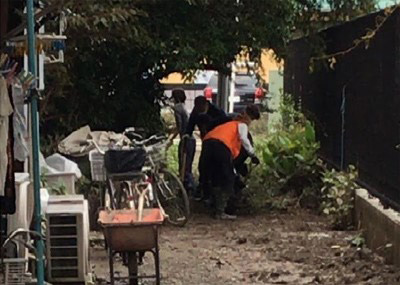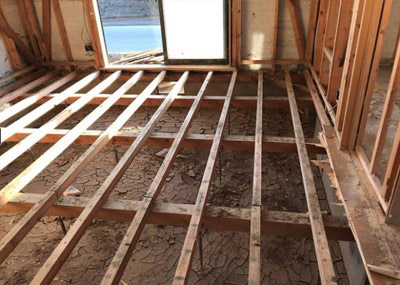- Waste management in Japan
- Circular economy in Japan
- Waste management in Asia
- Disaster waste management
Disaster Waste Removal and Volunteers
Removing disaster wastes is a daunting task
A severe disaster instantly turns items that we use in our daily lives into wastes. Damaged furniture, electrical appliances and even food items in our fridge become wastes. Such disaster wastes need to be cleared as soon as possible from disaster-stricken areas as their removal is a first step toward recovery.
However, properly segregating and removing disaster wastes requires considerable efforts as their amount and types are overwhelmingly more than those in normal times. If a flood occurs, shoveling out water and soil from damaged houses and yards requires additional efforts. If water and soil are trapped under the floor, tatami mats and floorboards also need to be removed for the houses to be disinfected and dried.
These tasks are hard, especially for elderly people. In such disaster situations, they can rely on disaster recovery volunteers.
 Photo 1. Shoveling out soil after flood
Photo 1. Shoveling out soil after flood Photo 2. Soil under the floor waiting to be cleared
Photo 2. Soil under the floor waiting to be clearedVolunteer support
After disasters, residents in affected areas segregate damaged household items according to municipal waste categories and carry them to designated sites. Volunteers help them with these tasks as well as soil removal, house clean-up and many other tasks. One important thing for volunteers is to understand the emotions of the affected people and consider the situation in which the residents were forced to dispose of their household items that they were attached to. For example, volunteers must be mindful of not calling any damaged item “waste” in front of the residents cleaning up their houses. From the viewpoint of the residents, they can finish clean-up tasks more quickly with the help of volunteers. Moreover, with their encouragement, the residents can often become more positive in rebuilding their damaged houses.
As described above, volunteers are helpful in many situations of disaster waste removal, but some difficulties remain for affected municipalities in thoroughly informing volunteers about proper discharge and segregation procedures. For example, volunteers not living in affected areas will need to be informed about local segregation rules in the affected municipalities because each municipality has its own rules. In April 2019, Japanese government issued an administrative notice on effective involvement of volunteers in disaster waste removal operations. It requests local governments, social welfare councils, and non-profit and volunteer organizations to share among them their guidelines on disaster waste discharge and segregation, and to cooperate in normal times. If they share these information beforehand, they can more easily inform volunteers of proper waste disposal procedures immediately after a disaster.
Segregation of wastes in disaster situations is as important as that in normal times. We will facilitate collaboration among municipalities and volunteer organizations in normal times through awareness-raising activities so that this important concept will spread to all volunteers who can be of great help in disaster waste removal operations.


